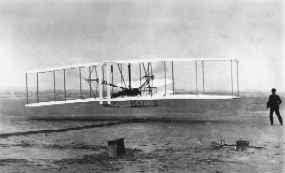
Only dead fish go with the flow – Andy Hunt
I read an interesting article at Sciencing.com not long ago about fish who swim upstream. The main reason salmon, for example, swim upstream is to ensure the survival of their offspring. Salmon are born in freshwater rivers, spend most of their adult lives in the ocean, and then return to the place they were born to lay their eggs.
As young salmon hatch in their home stream, they learn the smell of it. As they migrate downstream and into the ocean they may even memorize certain scents along the way. Even after being away for many years, when the salmon return to their birthplace as adults, they will use those smells to “test the waters” and find their home stream. Some studies have shown that salmon use the Earth’s magnetic field to guide their migration. This helps them travel long distances and understand where they are going.
Many interesting things stood out to me as I read the story of the migration of the salmon, but namely, it was that salmon swim upstream to ensure the survival of their offspring.
In your leadership, there will be times, more often than not, when for your survival and success you will need to swim upstream. In your organization, you may feel that you are swimming against the current as it relates to values and direction and this has placed you in an awkward situation.
But not all swimming upstream is necessarily a bad thing. At times it’s going to be required of you. Let’s look at four reasons why.
You have to swim upstream to grow
Your growth as a leader is not automatic and to grow you have to be intentional. When swimming downstream with the rest of the crowd it’s easy to just relax and go with the flow. But if you want to grow as a leader you will have to embrace what John Maxwell describes as the law of trade-offs. In other words, you have to give up to grow up.
Eric Hoffer said, “People will cling to an unsatisfactory way of life rather than change to get something better for fear of getting something worse,” and it’s this mindset that you have to break free from. It won’t be easy and you will have to swim upstream to attain it. But your growth as a leader depends upon it.
You have to swim upstream to stay true to your values
When it comes to your values and belief system as a leader, you will have to fight to keep from getting swept up in the downstream current. It’s so much easier to swim downstream and blend in. And by downstream I mean the downward current of negativity, bad attitudes, office politics, and toxic people.
“The first step toward success,” said Mark Caine, “is taken when you refuse to be a captive of the environment you find yourself in.” And this is precisely what you have to do as a leader. Your values and belief systems are your non-negotiables and to stay true to them, you will have to be relentless and swim upstream. Just as the salmon swim upstream to preserve their offspring, so too will you need to swim upstream to protect your values.
You have to swim upstream to make a lasting impact
Swimming upstream is painful and difficult. As a leader, you have to embrace the pain if you want to grow and make an impact on the lives of those around you.
Neale Donald Walsh said, “Life begins at the end of your comfort zone,” and this is the push I am encouraging you with – get out of your comfort zone. Swimming downstream requires little of you and consequently produces little from you. Click To Tweet But to swim upstream requires more and therefore, the return is more significant. When you embrace the struggle of swimming upstream you also embrace the reward it generates.
You have to swim upstream to be your best
 If you were to pause and look around at those closest to you in your circle- your friends and colleagues, how many would you say are living their best life as they swim downstream? These are unquestionably good people but are in a downstream current with no thought of where it’s taking them.
If you were to pause and look around at those closest to you in your circle- your friends and colleagues, how many would you say are living their best life as they swim downstream? These are unquestionably good people but are in a downstream current with no thought of where it’s taking them.
John Maxwell said, “We become the combined average of the five people we hang around.” Let that sink in for a moment. Think of those five people. Are those five floating along downstream? How many are swimming upstream? Are they taking you downstream with them or are you leading the way up?
Final Thoughts
I believe that your best days as a leader are found when you discover that swimming downstream with everyone else is not the destiny that’s meant for you. It’s discovered when you realize that you want more out of life and leadership than just blending in. And just as the salmon swim upstream to ensure the survival of their offspring, so too, you need to choose to swim upstream to ensure your success as a leader.
©2022 Doug Dickerson








 you expect your people to follow you? Your goals and objectives have to be clear otherwise you’ll never hit your target.
you expect your people to follow you? Your goals and objectives have to be clear otherwise you’ll never hit your target.




